What are the best paint techniques for walls? 11 inventive effects that go beyond basic
Incorporate these paint techniques for walls to give your interiors unique appeal


Reaching for your standard matt paint and painting the walls as standard sometimes is exactly what your home needs. However, there are so many paint techniques for walls to experiment with, that you might be limiting yourself. By applying paint with a different effect, you make can have a profound impact on the look and feel of your room, all without breaking the bank.
Paint techniques range from different finishes, such as gloss, eggshell, chalk paint, to styles of painting, including stenciling, ombre and more.
If you're up for trying a new technique, whether that's using a different type of paint or applying in an interesting way, then take a look at these paint ideas for every room in the home for ways to experiment with decorating like never before.
11 paint techniques for walls to try
'Decorative paint finishes have really come a long way and are often the creme de la creme or the biggest cheat,' says Emma Deterding, founder of Kelling Designs. 'They've been around for centuries, and in big stately homes you often find marble columns which you would expect to be stone but have been painted to look like stone.'
'A talented decorative painter can create a bespoke finish that can not only transform a room but set the tone and texture for the space,' Emma adds. 'From modern linen effects and paneling, through to dragging or even ragging (many people will remember this from the 80s and 90s), these beautiful effects can bring color and depth to a room that would not be achievable through wallpaper, flat paint, or fabrics. They are true magicians with color and can see and combine many different shades within the effect; something which is just so standout and unique.'
1. Color drenching
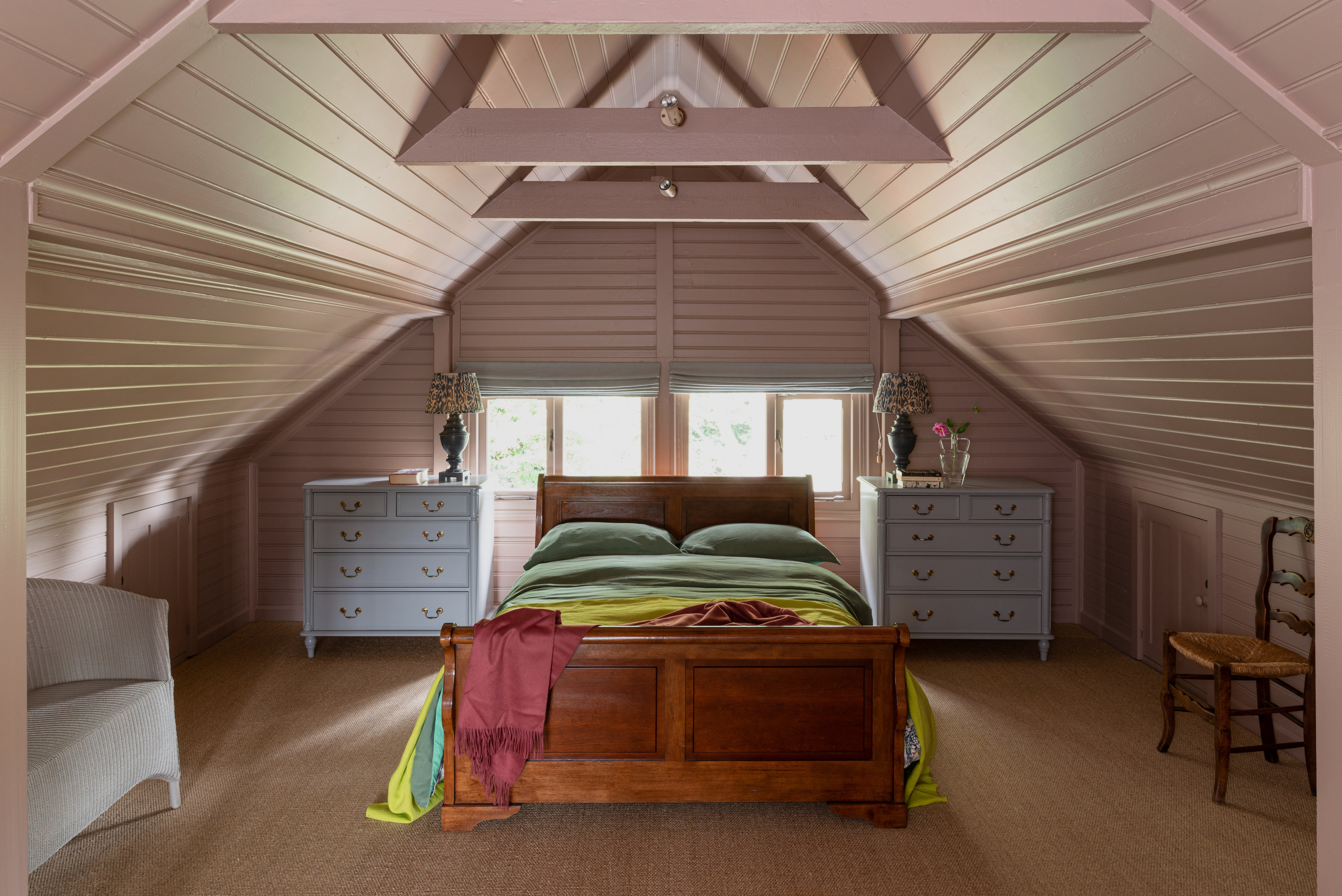
'A big trend that's been around and can be seen everywhere is color drenching,' says Chelsea Clark, head of brand at Lust Home. 'This is the process of taking various shades of one color and using it across multiple surfaces. Perfect in either modern or traditional styled homes, this technique is an easy way to create a statement.'
This style works great in both modern and traditional homes; in fact, it can be a great way of making a room with period features feel more contemporary. That apart, a room coated in a single tone can help pack a big punchs. If you have a small room or one with low ceilings, painting the ceiling and walls the same color can create an optical illusion, where you can’t see where one starts and the other stops, thereby making the room feel bigger, and in a sense, endless.
The Livingetc newsletters are your inside source for what’s shaping interiors now - and what’s next. Discover trend forecasts, smart style ideas, and curated shopping inspiration that brings design to life. Subscribe today and stay ahead of the curve.
2. Gloss
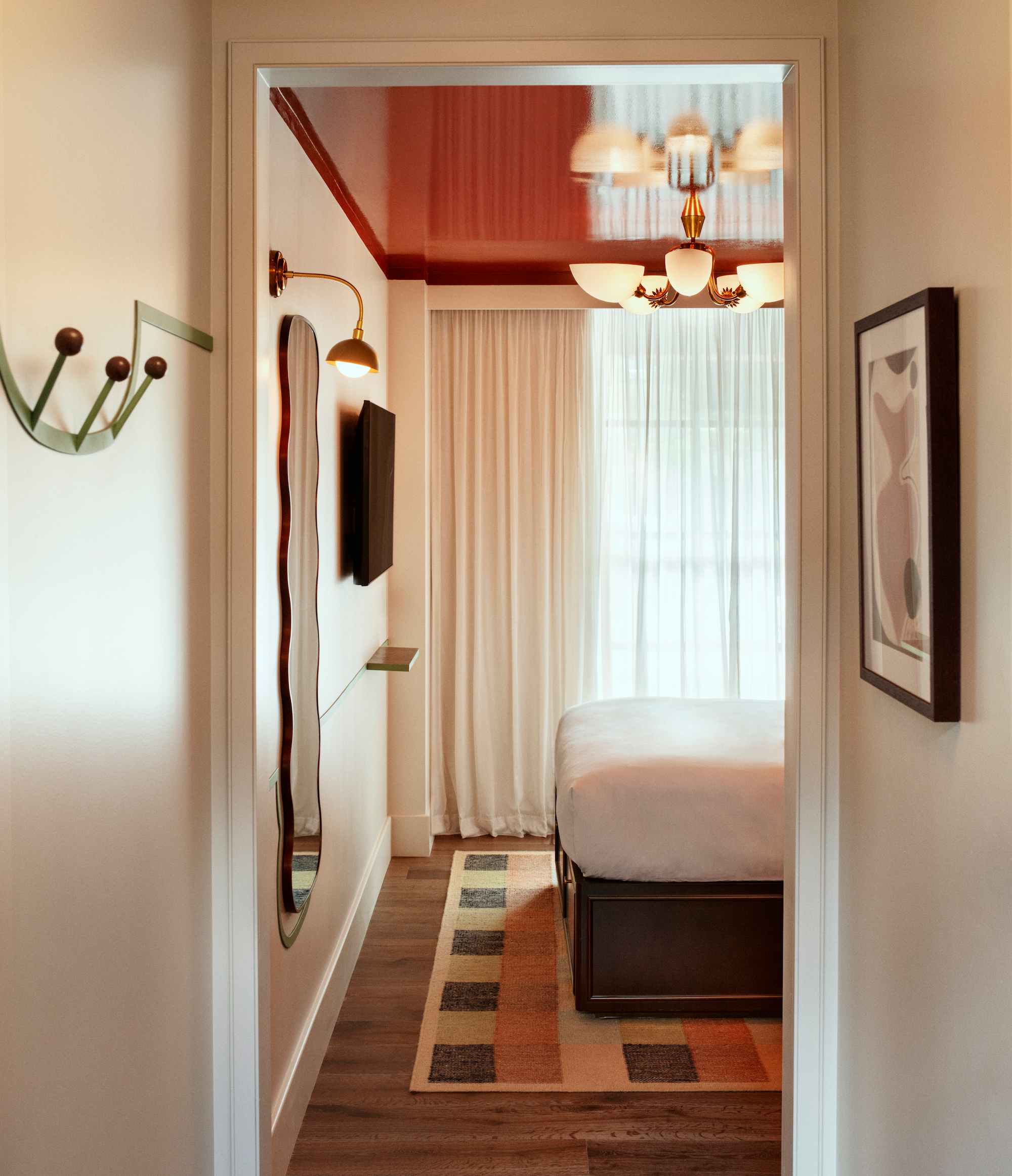
Lacquered or high gloss paint has been a perhaps surprisingly on-trend look for some time, and is a trend that appears to have staying power. This 'technique' is more of a paint finish, but don't underestimate that applying it is a skill in its own. Gloss creates a reflective surface and is highly durable, ideal for spaces that receive less light or to create a high-end look in a room.
'There is a return of full gloss, but not as we knew it,' says Patrick O’Donnell, brand ambassador at Farrow & Ball. 'We are seeing it used on trims again but in bolder colors than the generic white of bygone days; but the main area used has been on walls. One of the most popular being a practical design but also incredibly chic – painting the wall up to chair rail height (full gloss is brilliantly tough and resilient) and even used on ceilings for an ethereal shimmer.'
'It is a brilliant finish to help bounce light around a space and adds a deep glamour, especially in darks when used on your walls,' says Patrick. 'As with all paint finishes, there are caveats – one being your walls need to be of the smoothest quality, or you will see every dimple and imperfection. The best application method is to spray, so we would recommend a professional application as the color will need to be built up in layers and preferably lightly sanded between each coat.'
3. Color blocking
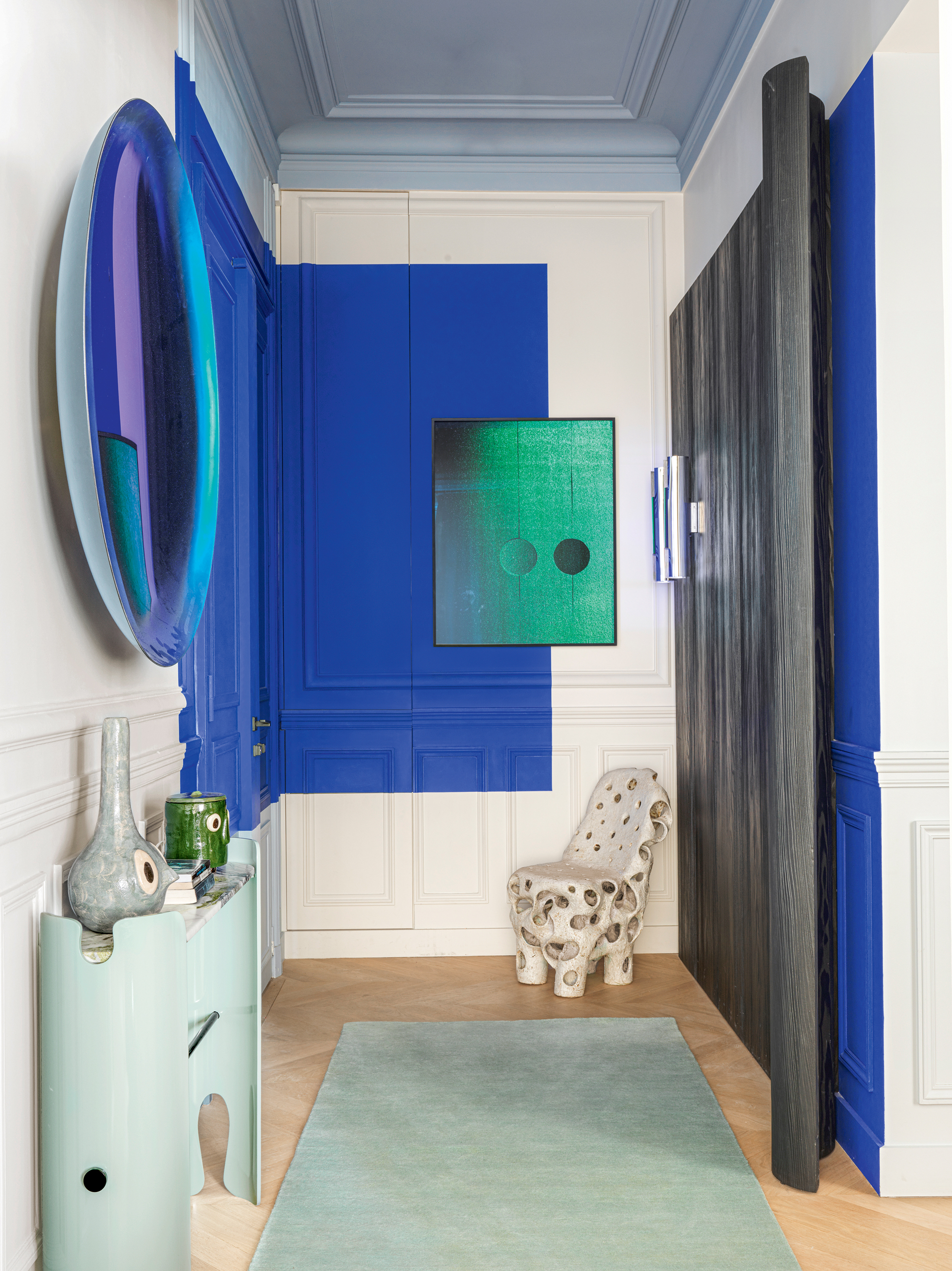
Pairing complementary colors together in a room or across visible spaces is a great way of adding dimension and depth to interiors. Color-blocking walls can set the mood. Meditate on the shades you want and choose the ones you think will work together while creating the feeling of separate areas.
'Color blocking is seen in fashion shows and high street; a trend that has made its way into our homes as well,' says Chelsea. 'Homeowners and interior designers alike are experimenting with two or more colors of paint to add depth and interest to any room. An ideal way to inject personality, is to use bold color options to make a serious impact in your home.'
In this design by Le Berre Vevaud, blocking has been used to color outside of the lines of the original features of this Parisian apartment, bringing a modern look to traditional wall paneling.
4. Stripes
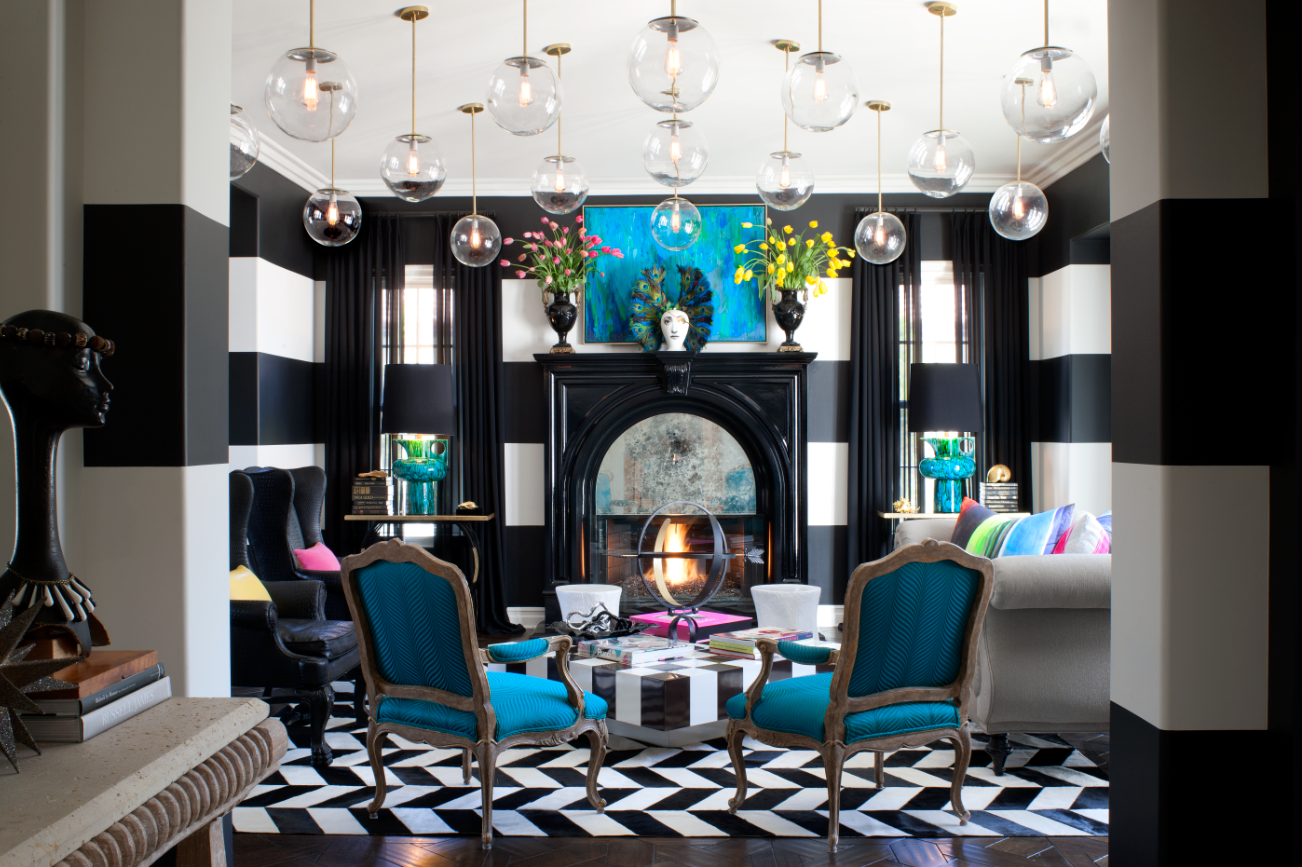
Striped walls are a great way to not just add a decorative design dose to a room but even create the illusion of height and width, a great idea for small spaces. 'A bold black and white stripe is always a good idea,' says Jeff Andrews, founder of Jeff Andrews Design. 'In this formal living room, we painted wide horizontal stripes for a dramatic effect. Going too narrow with stripes can end up looking like a circus.'
If you're planning on going the DIY way for painting stripes, make sure you have all the measurements of the room ready. You will need masking tape, a big bristled paint brush, and a primer.
'It can be difficult to get completely straight lines,' says paint expert, Annie Sloan. 'People use string and rulers and all sorts, but they rarely mention that in some homes, particularly older properties, the walls are not even. So first you need to decide if you want your straight line to run a straight distance about the floor or in relation to the ceiling. Don’t try to use both points of reference. I’m a big fan of masking tape if you’re going for crisp lines. If, of course, you’re aiming for a more rustic Scandinavian look just use a small brush, and drag – wibbly lines will add to the painterly charm of your painting.'
5. Half painted walls

Don't have an interesting architectural detail in your home? Worry not, a half-painted wall can help you 'fake' one. Using this wall paneling alternative, you don't have to divide the color into equal halves. You could choose to paint only a third, or even two-thirds of the wall in a different color, creating an entirely different effect.
'Painting datum lines like this is something we have done in other projects too, where we used lime wash,' says Nathan Cuttle, founder of Studio Nato. 'We find it often works well in brownstones or apartments with period details. It acts as a nod to the period style, like a modern interpretation of a wainscot or chair rail. It can be playful as well when you start layering in colorful furniture or when you continue the painted line across doors or window trims.'
'In rooms with taller ceilings and low furniture, it's a great way to bring the scale back to the space,' says Nathan. 'Playing with the height of the datum line then becomes an interesting visual study. How much of the color do you want to see peaking through the top of the sofa? Or how does the color change come through the railings of a metal bedframe?'
6. Ombre

When wondering how to paint a room, one of the most eye-catching effects is ombre - gently transitioning paint colors, creating a water-colored effect in the process. Think of the sunset, for instance, and how the colors of the sky change from orange, to red and so on. The different hues can be seen together, all merging into one. This is an inexpensive way to add color and texture to your walls.
A real ombre is a tough job to paint, though. 'Creating a true ombre effect in paint on a wall can be difficult; it would take specialist products to prevent the paint from drying too quickly, and you'd have to be a pretty good artist to seamlessly achieve the effect,' says Helen Shaw, director at Benjamin Moore. 'However, it is possible to create an Ombre-esque effect using three tonal paints and applying them in soft stripes up the wall, with the darkest at the bottom.'
7. Trompe-l'œil
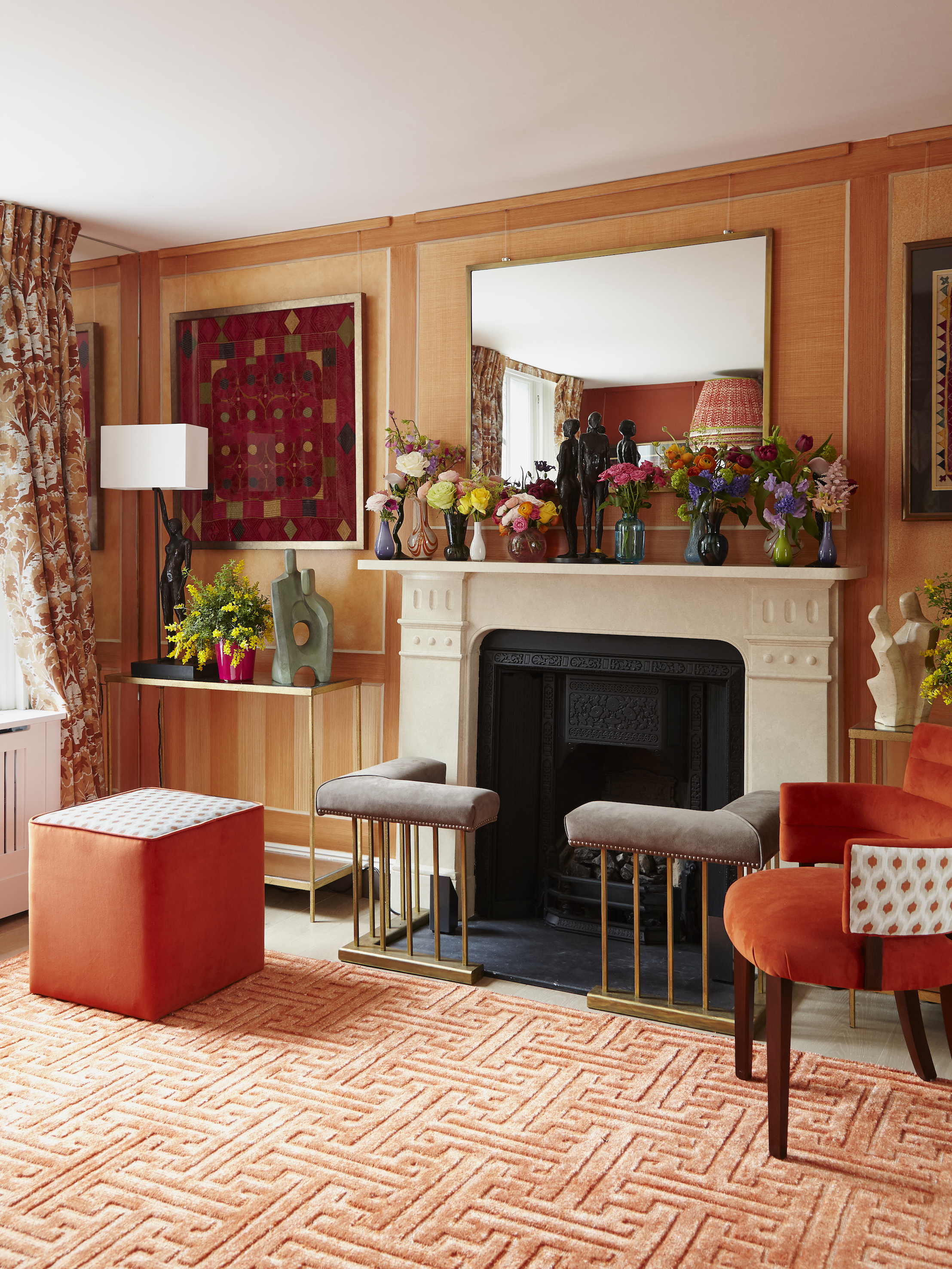
Wall paneling not only adds warmth to an interior, but also helps conceal problems on the walls, masks wiring, and acts as a simple accent. But if a wood accent wall is a step to far for you, you can create the effect with paint using a trompe-l'œil effect.
'In this particular project, we created a paneled room from a plain wall using paint to add interest, definition, and detailing to surround the fireplace whilst creating a beautiful focal point,' says Emma from Kelling Designs. 'We used the same color palette to create different looks. The fireplace was made to look like limestone – we had no budget to remove the existing one which was hideous and white. It just goes to show what can be achieved with clever design and the best of the best design talent.'
8. Metallic
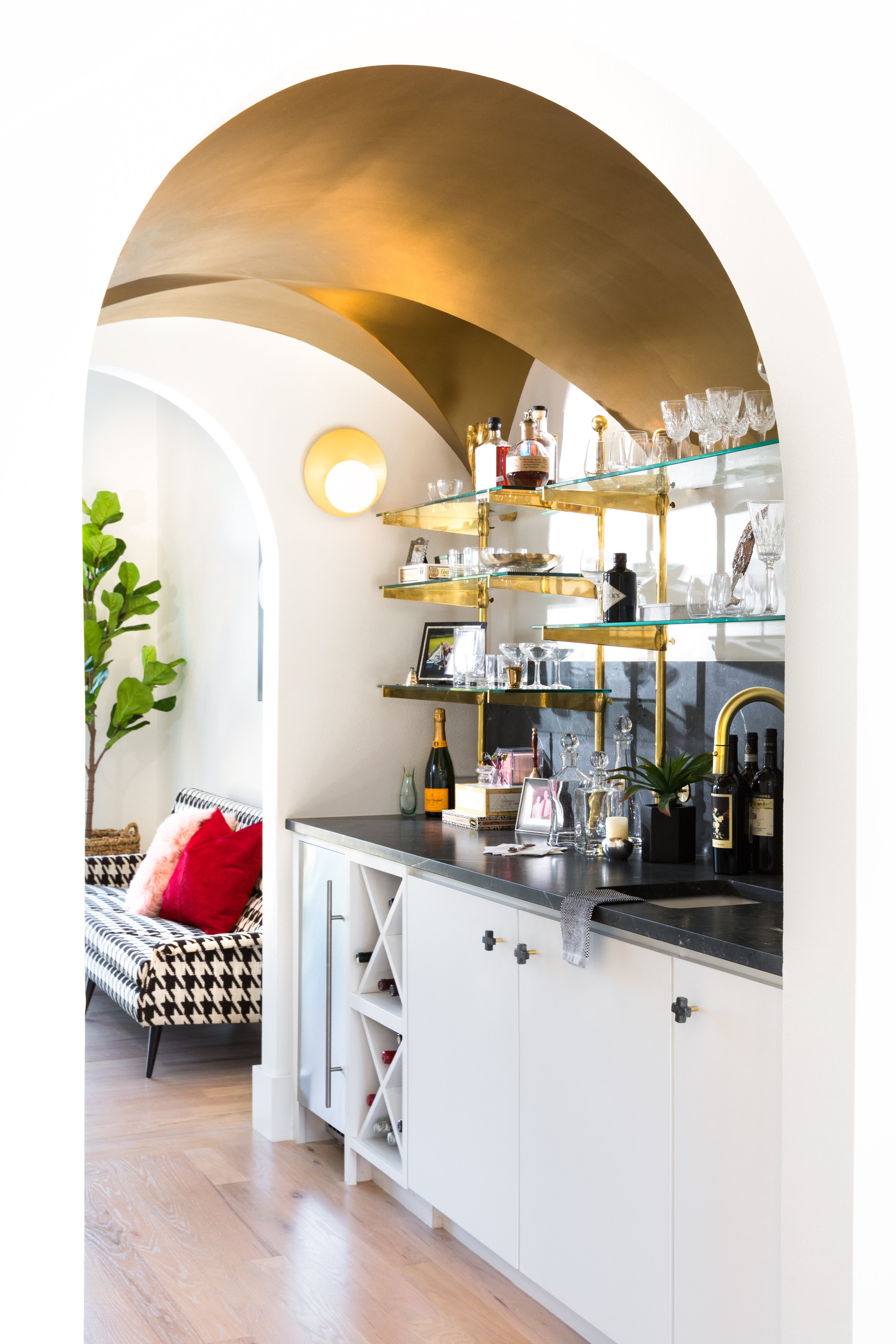
Gold-leafing, or gilding, is embellishing walls or even furniture with gold that has been hammered into extremely thin sheets or in liquid form. While leafing does have an old-world luxury to it, it still feels modern and welcoming. It's an expensive process but, thankfully, modern metallic effect paints can create a similar effect.
A metallic paint job can be used to add shine to a space that is usually devoid of light. Perhaps think of this for a hallway paint idea or to lift an ignored corner. It is also a great way to highlight architectural details, while giving off a warmth that both reflects and absorbs light.
9. Limewash

Limewash paint has roots dating back to Roman times, but it still has relevance and a place in modern homes. This paint is made from limestone that’s been crushed, burned, and mixed with water to make lime putty. The aged putty is thinned with water and colored with natural pigments. Surfaces painted in this look mottled and matte, with a distinct chalky texture; earthy, organic, and tactile.
This is a great way to ground an interior and create a warm setting, especially if you're re-doing a period home. Since it is free of solvents, traditional lime wash contains natural lime and natural pigments, making it an eco-friendly paint. The paint can be applied to drywall as long as an appropriate primer is used.
Other paints that have a similar natural, earthy look are chalk paints or milk paints; although they have their own unique properties, and care requirements.
10. Stencilling

Stencil designs have recently undergone quite the makeover, with modern, smart, and professional designs taking over the market, often mistaken for wallpaper. When it comes to living room or bedroom paint ideas, stenciling a wall can be a great way to introduce patterns to a room.
These can be used on ceilings and floors, and even as a way to elevate a simple corner. This painting technique can be a great DIY project as well; with the right tools. They offer near-endless possibilities for custom patterns and personal color schemes.
11. Rag rolling

A popular paint technique, rag rolling is using a roll of cloth that produces a rhythmic linear pattern, as opposed to a random effect of the loosely bunched rag in all the other painting techniques. This technique creates a mottled look with distinct lines. This can also be done with gloved hands. Keep in mind that rollers don’t reach into corners or narrow sections near doorways or windows, so those tiny corners can be done by hand.
For this technique, you'll need a base coat color and a topcoat that is 3 or 4 shades darker or lighter than the base coat. Ideally, select those that match the already existing colors in your room. If you're doing this as a DIY weekend project, perhaps practice on stiff boards to ensure that you know what you're doing, or if you even like the effect.

Aditi Sharma Maheshwari started her career at The Address (The Times of India), a tabloid on interiors and art. She wrote profiles of Indian artists, designers, and architects, and covered inspiring houses and commercial properties. After four years, she moved to ELLE DECOR as a senior features writer, where she contributed to the magazine and website, and also worked alongside the events team on India Design ID — the brand’s 10-day, annual design show. She wrote across topics: from designer interviews, and house tours, to new product launches, shopping pages, and reviews. After three years, she was hired as the senior editor at Houzz. The website content focused on practical advice on decorating the home and making design feel more approachable. She created fresh series on budget buys, design hacks, and DIYs, all backed with expert advice. Equipped with sizable knowledge of the industry and with a good network, she moved to Architectural Digest (Conde Nast) as the digital editor. The publication's focus was on high-end design, and her content highlighted A-listers, starchitects, and high-concept products, all customized for an audience that loves and invests in luxury. After a two-year stint, she moved to the UK and was hired at Livingetc as a design editor. She now freelances for a variety of interiors publications.